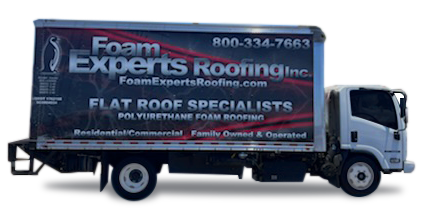When it comes to roofing materials, foam roofing may not be the first option that comes to mind. However, this innovative and eco-friendly solution has gained popularity in recent years due to its numerous benefits. In this comprehensive guide, we’ll explore the world of foam roofing, detailing its advantages, the installation process, and essential maintenance tips to help you make an informed decision for your home or business.
Foam roofing, also known as spray polyurethane foam (SPF) roofing, is a high-performance, lightweight roofing material that consists of a seamless layer of closed-cell foam insulation. This roofing material is ideal for flat and low-slope roofs and offers excellent insulation, waterproofing, and durability.
Benefits of Foam Roofing
One of the top benefits of foam roofing is its exceptional energy efficiency. The closed-cell foam insulation provides superior thermal resistance, which helps keep your home or business cooler in the summer and warmer in the winter. This can result in significant savings on your energy bills.
Foam roofing’s seamless design eliminates the possibility of leaks and offers superior protection against water damage. The closed-cell structure of the foam material does not allow water to penetrate, making it an excellent choice for areas with heavy rainfall or snow.
When properly installed and maintained, foam roofing can last for decades, offering long-term protection and minimal upkeep. The material’s ability to expand and contract with temperature fluctuations also prevents cracking and other forms of damage.
Surface Preparation
Before installing a foam roof, the existing roof surface must be thoroughly cleaned and prepared. This involves removing any debris, dirt, and loose materials, as well as repairing any damaged areas.
Application
The foam roofing material is applied using specialized spray equipment. The two liquid components of the foam (polyol and isocyanate) are mixed at the spray gun, creating a chemical reaction that results in the rapid expansion of the foam. This foam is sprayed onto the roof surface in layers, creating a seamless and waterproof barrier.
Protective Coating
After the foam has cured, a protective coating is applied to provide additional durability and resistance to ultraviolet (UV) rays. This coating can be acrylic, silicone, or urethane-based and may require periodic reapplication to ensure long-lasting protection.
Regular Inspections
To maintain the integrity of your foam roof, perform regular inspections, ideally twice a year or after significant weather events. Look for signs of damage, ponding water, or any areas that may require repair.
Cleaning and Debris Removal
Keep your foam roof clean and free of debris, such as leaves and branches, to prevent potential damage and ensure proper drainage. Gently wash the roof surface with a low-pressure hose and mild detergent as needed.
Recoating
The protective coating on your foam roof may require reapplication every 5-10 years, depending on the type of coating and local climate conditions. This helps maintain the roof’s durability and UV resistance.
Foam roofing offers an energy-efficient, durable, and waterproof roofing solution for flat and low-slope roofs. By understanding the benefits, installation process, and maintenance tips, you can make an informed decision about whether foam roofing is right for your home or business.
If you need a Free estimate on a Foam Roof in Arizona contact Foam Experts Roofing!















